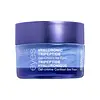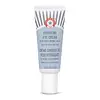What's inside
What's inside
 Key Ingredients
Key Ingredients

 Benefits
Benefits

 Concerns
Concerns

No concerns
 Ingredients Side-by-side
Ingredients Side-by-side

Water
Skin ConditioningIsododecane
EmollientDimethicone
EmollientGlycerin
HumectantDimethicone Crosspolymer
Emulsion StabilisingPentylene Glycol
Skin ConditioningNeopentyl Glycol Diheptanoate
EmollientPolymethylsilsesquioxane
Myristyl Nicotinate
Skin ConditioningTetrahexyldecyl Ascorbate
AntioxidantButylene Glycol
HumectantCarbomer
Emulsion StabilisingCaprylyl Glycol
EmollientPanthenol
Skin ConditioningCI 77891
Cosmetic ColorantPhenoxyethanol
PreservativeSodium Hydroxide
BufferingHelianthus Annuus Seed Oil
EmollientCitrus Medica Vulgaris Fruit Extract
AntioxidantLens Esculenta Fruit Extract
Skin ConditioningPyrus Malus Fruit Extract
Skin ConditioningNicotiana Benthamiana Octapeptide-30 Sh-Oligopeptide-2
Skin ConditioningParfum
MaskingEthylhexylglycerin
Skin ConditioningHexylene Glycol
EmulsifyingGlyceryl Acrylate/Acrylic Acid Copolymer
HumectantIsohexadecane
EmollientCarnosine
Skin ConditioningDisodium EDTA
Allantoin
Skin ConditioningSodium Hyaluronate
HumectantBenzophenone-4
UV AbsorberSodium Lactate
BufferingGlycine Soja Oil
EmollientAlumina
AbrasiveIsopropyl Titanium Triisostearate
EmollientDunaliella Salina Extract
Skin ConditioningLupinus Albus Seed Extract
Skin ConditioningSodium PCA
HumectantDiglucosyl Gallic Acid
Bacillus/Sea Salt Ferment Filtrate
Skin ConditioningCitric Acid
BufferingEthylene/Propylene/Styrene Copolymer
Lecithin
EmollientSodium Benzoate
MaskingPolyhydroxystearic Acid
EmulsifyingPotassium Sorbate
PreservativeOryza Sativa Extract
AbsorbentBenzyl Benzoate
AntimicrobialPolyglyceryl-3 Diisostearate
EmulsifyingLimonene
PerfumingPalmitoyl Tripeptide-5
Skin ConditioningPantolactone
HumectantButylene/Ethylene/Styrene Copolymer
Silica
AbrasiveGlobularia Alypum Leaf Extract
Skin ConditioningLinalool
PerfumingPlankton Extract
Skin ConditioningCitral
PerfumingCitronellol
PerfumingTocopherol
AntioxidantGeraniol
PerfumingBenzyl Salicylate
PerfumingBenzyl Alcohol
PerfumingCI 42090
Cosmetic ColorantWater, Isododecane, Dimethicone, Glycerin, Dimethicone Crosspolymer, Pentylene Glycol, Neopentyl Glycol Diheptanoate, Polymethylsilsesquioxane, Myristyl Nicotinate, Tetrahexyldecyl Ascorbate, Butylene Glycol, Carbomer, Caprylyl Glycol, Panthenol, CI 77891, Phenoxyethanol, Sodium Hydroxide, Helianthus Annuus Seed Oil, Citrus Medica Vulgaris Fruit Extract, Lens Esculenta Fruit Extract, Pyrus Malus Fruit Extract, Nicotiana Benthamiana Octapeptide-30 Sh-Oligopeptide-2, Parfum, Ethylhexylglycerin, Hexylene Glycol, Glyceryl Acrylate/Acrylic Acid Copolymer, Isohexadecane, Carnosine, Disodium EDTA, Allantoin, Sodium Hyaluronate, Benzophenone-4, Sodium Lactate, Glycine Soja Oil, Alumina, Isopropyl Titanium Triisostearate, Dunaliella Salina Extract, Lupinus Albus Seed Extract, Sodium PCA, Diglucosyl Gallic Acid, Bacillus/Sea Salt Ferment Filtrate, Citric Acid, Ethylene/Propylene/Styrene Copolymer, Lecithin, Sodium Benzoate, Polyhydroxystearic Acid, Potassium Sorbate, Oryza Sativa Extract, Benzyl Benzoate, Polyglyceryl-3 Diisostearate, Limonene, Palmitoyl Tripeptide-5, Pantolactone, Butylene/Ethylene/Styrene Copolymer, Silica, Globularia Alypum Leaf Extract, Linalool, Plankton Extract, Citral, Citronellol, Tocopherol, Geraniol, Benzyl Salicylate, Benzyl Alcohol, CI 42090
Water
Skin ConditioningEthylhexyl Olivate
Skin ConditioningPrunus Armeniaca Kernel Oil
MaskingButylene Glycol
HumectantCetyl Alcohol
EmollientGlycerin
HumectantMangifera Indica Seed Butter
Skin ConditioningSodium Acrylates Crosspolymer-2
AbsorbentCetyl Phosphate
EmulsifyingCaffeine
Skin ConditioningSqualane
EmollientHyaluronic Acid
HumectantPanthenol
Skin ConditioningCucumis Sativus Fruit Extract
EmollientAvena Sativa Bran Extract
AbrasiveAloe Barbadensis Leaf Juice
Skin ConditioningCamellia Sinensis Leaf Extract
AntimicrobialColloidal Oatmeal
AbsorbentChrysanthemum Parthenium Extract
Skin ConditioningGlycyrrhiza Glabra Root Extract
BleachingCitrus Aurantium Dulcis Peel Extract
Emulsion StabilisingCaprylic/Capric Triglyceride
MaskingCaprylyl Glycol
EmollientSodium Phytate
Sodium Polyglutamate
HumectantC20-22 Alkyl Phosphate
Emulsifying1,2-Hexanediol
Skin ConditioningC20-22 Alcohols
Emulsion StabilisingHydroxyacetophenone
AntioxidantPropanediol
SolventPhenoxyethanol
PreservativePotassium Hydroxide
BufferingWater, Ethylhexyl Olivate, Prunus Armeniaca Kernel Oil, Butylene Glycol, Cetyl Alcohol, Glycerin, Mangifera Indica Seed Butter, Sodium Acrylates Crosspolymer-2, Cetyl Phosphate, Caffeine, Squalane, Hyaluronic Acid, Panthenol, Cucumis Sativus Fruit Extract, Avena Sativa Bran Extract, Aloe Barbadensis Leaf Juice, Camellia Sinensis Leaf Extract, Colloidal Oatmeal, Chrysanthemum Parthenium Extract, Glycyrrhiza Glabra Root Extract, Citrus Aurantium Dulcis Peel Extract, Caprylic/Capric Triglyceride, Caprylyl Glycol, Sodium Phytate, Sodium Polyglutamate, C20-22 Alkyl Phosphate, 1,2-Hexanediol, C20-22 Alcohols, Hydroxyacetophenone, Propanediol, Phenoxyethanol, Potassium Hydroxide
 Reviews
Reviews

Ingredients Explained
These ingredients are found in both products.
Ingredients higher up in an ingredient list are typically present in a larger amount.
Butylene Glycol (or BG) is used within cosmetic products for a few different reasons:
Overall, Butylene Glycol is a safe and well-rounded ingredient that works well with other ingredients.
Though this ingredient works well with most skin types, some people with sensitive skin may experience a reaction such as allergic rashes, closed comedones, or itchiness.
Learn more about Butylene GlycolCaprylyl Glycol is a humectant and emollient, meaning it attracts and preserves moisture.
It is a common ingredient in many products, especially those designed to hydrate skin. The primary benefits are retaining moisture, skin softening, and promoting a healthy skin barrier.
Though Caprylyl Glycol is an alcohol derived from fatty acids, it is not the kind that can dry out skin.
This ingredient is also used as a preservative to extend the life of products. It has slight antimicrobial properties.
Learn more about Caprylyl GlycolGlycerin is already naturally found in your skin. It helps moisturize and protect your skin.
A study from 2016 found glycerin to be more effective as a humectant than AHAs and hyaluronic acid.
As a humectant, it helps the skin stay hydrated by pulling moisture to your skin. The low molecular weight of glycerin allows it to pull moisture into the deeper layers of your skin.
Hydrated skin improves your skin barrier; Your skin barrier helps protect against irritants and bacteria.
Glycerin has also been found to have antimicrobial and antiviral properties. Due to these properties, glycerin is often used in wound and burn treatments.
In cosmetics, glycerin is usually derived from plants such as soybean or palm. However, it can also be sourced from animals, such as tallow or animal fat.
This ingredient is organic, colorless, odorless, and non-toxic.
Glycerin is the name for this ingredient in American English. British English uses Glycerol/Glycerine.
Learn more about GlycerinPanthenol is a common ingredient that helps hydrate and soothe the skin. It is found naturally in our skin and hair.
There are two forms of panthenol: D and L.
D-panthenol is also known as dexpanthenol. Most cosmetics use dexpanthenol or a mixture of D and L-panthenol.
Panthenol is famous due to its ability to go deeper into the skin's layers. Using this ingredient has numerous pros (and no cons):
Like hyaluronic acid, panthenol is a humectant. Humectants are able to bind and hold large amounts of water to keep skin hydrated.
This ingredient works well for wound healing. It works by increasing tissue in the wound and helps close open wounds.
Once oxidized, panthenol converts to pantothenic acid. Panthothenic acid is found in all living cells.
This ingredient is also referred to as pro-vitamin B5.
Learn more about PanthenolPhenoxyethanol is a preservative that has germicide, antimicrobial, and aromatic properties. Studies show that phenoxyethanol can prevent microbial growth. By itself, it has a scent that is similar to that of a rose.
It's often used in formulations along with Caprylyl Glycol to preserve the shelf life of products.
Water. It's the most common cosmetic ingredient of all. You'll usually see it at the top of ingredient lists, meaning that it makes up the largest part of the product.
So why is it so popular? Water most often acts as a solvent - this means that it helps dissolve other ingredients into the formulation.
You'll also recognize water as that liquid we all need to stay alive. If you see this, drink a glass of water. Stay hydrated!
Learn more about Water